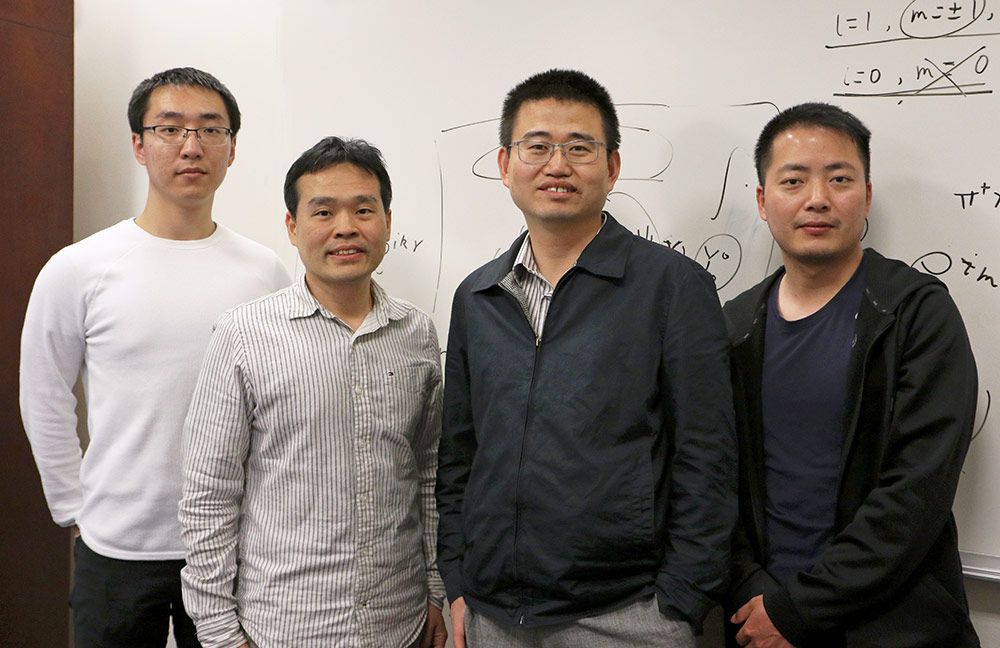
Most people know that there are three fundamental states of matter: Solids, liquids and gases. However, there are actually several additional, more unfamiliar forms, including plasma—which is found in the stars—and Bose-Einstein condensates—which only exist at the very coldest temperatures.
Now, physicists from the University of Texas at Dallas (UT) have proposed an entirely new theoretical form of matter which they have called "superfluid quasicrystal." The exotic new form and a "recipe" for making it have been described in a new study published in the journal Physical Review Letters.
So, what exactly is a superfluid quasicrystal?
First it is important to understand a superfluid—an exotic form of liquid that displays very unusual properties. Superfluids have zero viscosity meaning they don't produce friction when they flow across a surface and, therefore, do not lose energy and slow down. For these superfluid properties to emerge, liquids such as helium have to be cooled to extremely low temperatures.
"If your morning coffee was a superfluid, and you stirred it with a spoon, you could remove the spoon and the coffee would never stop moving," Chuanwei Zhang, a professor of physics at UT's School of Natural Sciences and Mathematics and corresponding author of the study, said in a statement. "Regular fluids will eventually stop due to friction with the cup."
If you took a superfluid and combined it with a solid crystal, you would be left with a supersolid—an exotic form of matter that physicists proposed around half a century ago but have only recently produced in labs.
The laws of physics that govern the world that we can see strictly define what is a fluid and what is a solid. A liquid cannot behave like a solid, and vice versa. While they can be mixed—for example, a glass of water with ice in it—the two forms are still considered separate.
However, in the bizarre physics of quantum mechanics—which describes nature at the very smallest scales—things are not quite so simple, according to Zhang.

"A supersolid is a fluid flowing without friction whose atoms are also arranged in a periodic way, just as they are in a crystal solid," he said. "These two states, which are mutually exclusive in our everyday life, can exist at the same time in the same physical material in the quantum world."
In light of this, the UT researchers proposed that, logically, there should also be a new type of matter that combined properties of both a superfluid and a quasicrystal.
Crystals are solid materials whose atoms are arranged in a highly ordered, lattice pattern that repeats in all directions. Larger examples include salt, snowflakes and diamonds. Quasicrystals, on the other hand, resemble crystals in that their atoms have an ordered structure, however, their arrangement does not repeat—or in other words, is non-periodic.
The new form of matter that the team propose should have a non-periodic atomic structure, like a quasicrystal, while also being able to flow without friction, like a superfluid, according to the new study.
"This is a theory at the moment, but in this paper, we suggest an experimental setup similar to the experiment that produced the first supersolids," Zhang said. "The good news is, we shouldn't have to invent any new technology to actually make this material. It basically involves shooting lasers at a Bose-Einstein condensate."
The researchers think that while producing the material will be difficult, a real superfluid quasicrystal could potentially be created within the next few years.
Uncommon Knowledge
Newsweek is committed to challenging conventional wisdom and finding connections in the search for common ground.
Newsweek is committed to challenging conventional wisdom and finding connections in the search for common ground.
About the writer
Aristos is a Newsweek science reporter with the London, U.K., bureau. He reports on science and health topics, including; animal, ... Read more
To read how Newsweek uses AI as a newsroom tool, Click here.








